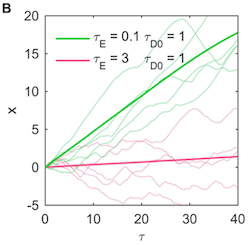
Jun’s paper shows how run-and-tumble navigation strategies can be much more efficient than previously believed. Countless bacteria, larvae and even larger organisms (and robots) navigate gradients by alternating periods of straight motion (runs) with random reorientation events (tumbles). Control of the tumble probability is based on previously-encountered signals. A drawback of this run-and-tumble strategy is that occasional runs in the wrong direction are wasteful. Here we show that there is an operating regime within the organism’s internal parameter space where run-and-tumble navigation can be extremely efficient. We characterize how the positive feedback between behavior and sensed signal results in a type of non-equilibrium dynamics, with the organism rapidly tumbling after moving in the wrong direction and extending motion in the right ones. For a distant source, then, the organism can find it fast.